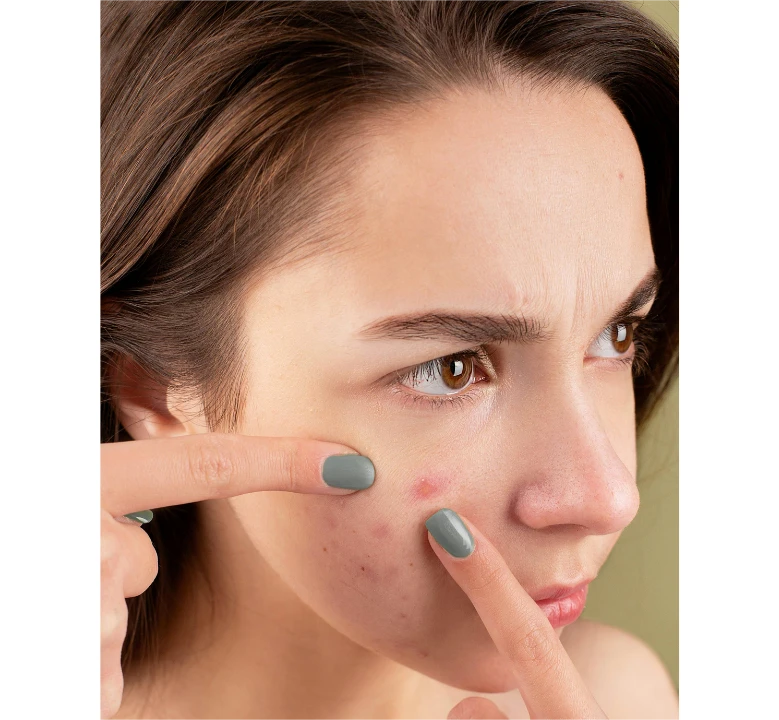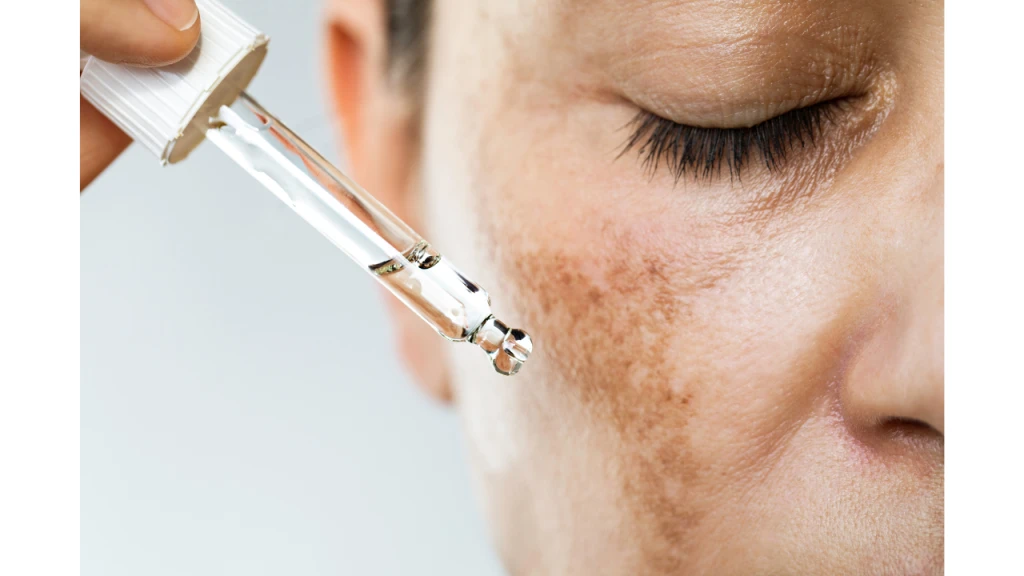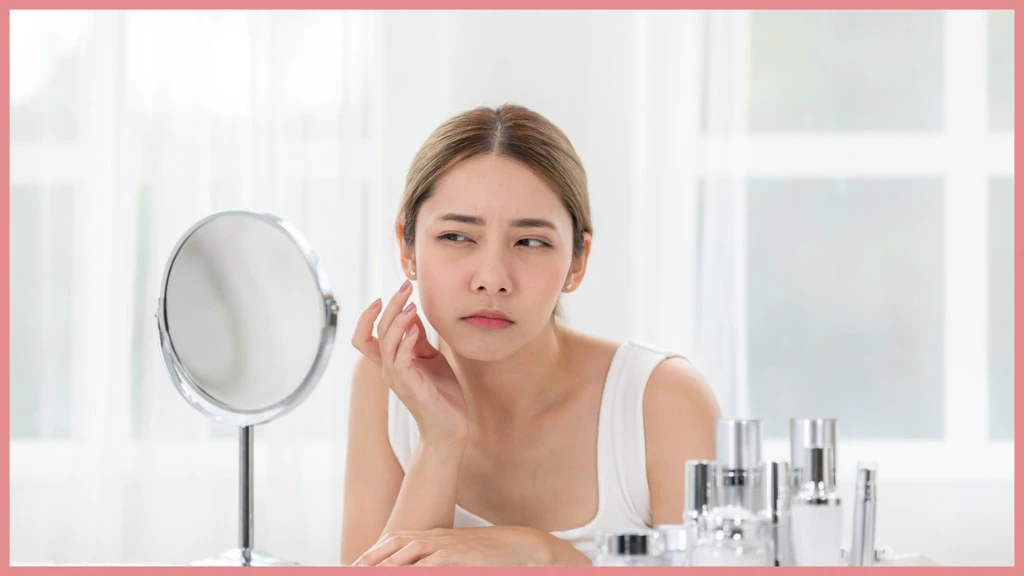Acne Scars or Dark Marks: The Difference

If you’ve ever dealt with acne, you know how frustrating it is to finally get your breakouts under control only to be left with stubborn marks. I’ve been there too—staring at my reflection, wondering if these reminders of past blemishes would ever go away.
Many people confuse acne scars with hyperpigmentation, but they have different causes and treatments. To improve your results, you may also want to explore how long acne scars take to heal and the best way to combine Vitamin C with Niacinamide for brightening.
Two common culprits behind these marks are acne scars and hyperpigmentation. While they might look similar at first glance, the way they develop and the methods to address them are completely different.
I'll dive into the details to help you understand what’s happening with your skin and how to move forward.
Understanding the Difference Between Acne Scars and Hyperpigmentation
What Are Acne Scars?

Acne scars occur when deeper acne lesions damage the skin and underlying tissues. This damage disrupts the skin’s collagen production during the healing process. The result? Changes in skin texture that can range from shallow depressions to raised scars.
Collagen is the protein responsible for your skin’s structure and elasticity. Acne scars form when the balance of collagen during wound healing is disrupted:
- Too little collagen leads to indented scars like ice pick, boxcar, and rolling scars.
- Too much collagen results in raised scars such as hypertrophic or keloid scars.
Types of Acne Scars
Understanding the different types of acne scars is crucial for identifying the best treatment options. Each type presents distinct characteristics, and recognizing these can help you work with a dermatologist to develop a targeted approach.
Ice Pick Scars
These are deep, narrow indentations that look like tiny holes puncturing the skin. They’re one of the most difficult types of scars to treat because of their depth, often requiring procedures like TCA Cross or deep microneedling to encourage collagen production.
Boxcar Scars
Wide depressions with defined edges characterize these scars, making them appear as rectangular or oval indentations. They are typically caused by severe acne and respond well to treatments like subcision combined with resurfacing lasers.
Rolling Scars
These scars create a wavy, uneven texture across the skin’s surface. The underlying tethering of skin tissue causes this undulating effect, and procedures like subcision or radiofrequency microneedling can effectively release the tethered tissue.
Hypertrophic Scars
Raised scars that remain within the boundaries of the original acne lesion. These occur when the skin produces excess collagen during the healing process. Silicone gel sheets, corticosteroid injections, and fractional lasers can help flatten these scars over time.
Keloid Scars
Thick, raised scars that extend beyond the original injury site, often appearing in darker skin tones. These scars result from an overproduction of collagen and can be challenging to treat.
Methods like steroid injections, cryotherapy, or surgical removal are often combined with preventive measures to minimize regrowth.
What Is Hyperpigmentation?

Hyperpigmentation is a skin discoloration caused by an overproduction of melanin. Post-inflammatory hyperpigmentation (PIH) occurs when skin darkens after inflammation, like an acne breakout.
Unlike acne scars, PIH doesn’t involve changes in texture—it’s purely a color issue.
Melanin is your skin’s natural pigment, and it increases as part of the skin’s defense mechanism after irritation or injury. For darker complexions like mine, PIH can range from light brown to deep purple, depending on the depth of pigmentation.
How Long Does PIH Last?
PIH is usually temporary but can linger for months or even years without treatment. The fading process depends on factors like the severity of inflammation and your skincare habits. It’s also important to distinguish PIH from post-acne erythema (redness), which is more common in lighter skin tones.
Other Causes of PIH
Beyond acne, hyperpigmentation can result from burns, eczema, or psoriasis—essentially anything that irritates or inflames the skin.
Acne Scars vs. Hyperpigmentation: Major Differences
Here’s a side-by-side comparison to make things clearer:
| Feature | Acne Scars | Hyperpigmentation |
| Appearance | Textural changes | Color changes |
| Cause | Collagen damage | Overproduction of melanin |
| Location | Deeper layers of the skin | Superficial layers |
| Permanence | Usually permanent | Can fade over time |
How to Treat Acne Scar Treatments?
Addressing acne scars often requires interventions targeting the skin’s structure:
Topical Treatments:
When it comes to managing mild scars, I usually start with topical treatments—they’re often the first line of defense. Retinoids, in particular, have been a game changer for me. They help boost cell turnover and encourage collagen production, which makes a noticeable difference over time.
Exfoliating acids such as glycolic acid or salicylic acid can improve skin texture over time by removing dead skin layers and promoting regeneration. You can try this this 2% Salicylic Acid Pore Exfoliating Serum by The Ordinary, available from Amazon.com.
Vitamin E and peptides support healing by nurturing damaged skin, while hyaluronic acid like The Ordinary's 2% Hyaluronic Acid+ B5 Hydrating Serum from Amazon.com provides hydration, which is essential for overall skin repair.
Oral Treatments
For more severe acne scars, I’ve found that oral treatments like isotretinoin can be a game changer—if prescribed by a dermatologist, of course.
It works by reducing oil production, calming inflammation, and even helping to prevent new scars from forming. It’s definitely a powerful option for tackling those more stubborn issues.
Procedural Options
Procedures are highly effective for deeper or more complex scars. Microneedling stimulates natural collagen production and can be enhanced with PRP (platelet-rich plasma) to boost results.
Laser therapies such as Fraxel or PicoSure precisely target scar tissue, encouraging smoother skin. Radiofrequency microneedling devices like Morpheus8 combine heat and needles to tighten skin and improve its texture.
Chemical peels remove the outer damaged skin layers, revealing healthier skin underneath. Subcision breaks the fibrous bands tethering rolling scars, allowing the skin to bounce back. Dermal fillers offer a temporary solution to depressed scars, while innovative options like Ellacor provide minimally invasive surgery for severe cases.
How to Treat Hyperpigmentation?
Hyperpigmentation treatments aim to reduce melanin production and brighten the skin. These options are chosen based on the depth and severity of discoloration.
Topical Treatments
Topical solutions are central to managing hyperpigmentation. Prescription options like hydroquinone and retinoids are highly effective for fading dark spots.
Over-the-counter ingredients, including kojic acid, tranexamic acid , arbutin, niacinamide, vitamin C, and licorice extract, work to inhibit melanin production and improve skin tone.
Azelaic acid and ferulic acid provide additional anti-inflammatory benefits, while gentle exfoliants like lactic or mandelic acid remove dull, pigmented skin layers for a brighter complexion.
Other Tools
Incorporating tools like LED masks can complement topical treatments. Red or near-infrared light reduces inflammation and supports the skin’s healing process, enhancing the effects of other therapies.
Procedural Options
For persistent hyperpigmentation, professional procedures can deliver faster results. Chemical peels effectively resurface the skin, diminishing the appearance of dark spots.
Laser treatments, including IPL and fractional lasers like Varilite and AdvaLight, precisely target pigmentation while minimizing harm to surrounding skin. Microdermabrasion provides gentle exfoliation, removing the outermost pigmented layer to reveal a clearer, more even-toned complexion.
How to Prevent Acne Scars and Hyperpigmentation
Preventing acne scars and hyperpigmentation is always a better approach than trying to treat them later.
Avoid Picking Pimples
The first step to prevention is avoiding the temptation to pick or squeeze pimples. Doing so can worsen inflammation and significantly increase the likelihood of permanent marks, turning a temporary issue into a lasting problem.
Daily Sunscreen Application
Daily sunscreen application like Tower 28 Beauty's SunnyDays Tinted Sunscreen with SPF of 30 from Amazon.com or higher is essential. This step is especially critical for darker skin tones like mine because UV rays can intensify hyperpigmentation and delay the healing process, making discoloration more prominent and persistent.
Consistent Skincare Routine
Consistency in your skincare routine is another essential factor. Products containing acne-fighting ingredients like salicylic acid or benzoyl peroxide help control breakouts. Retinoids are particularly effective as they enhance cell turnover, reducing the likelihood of marks forming in the first place.
Regular exfoliation with gentle acids, such as lactic or mandelic acid, can also maintain smooth and even-toned skin, preventing clogged pores and minimizing post-inflammatory discoloration.
Managing Stress Levels
I’ve noticed that managing stress has a bigger impact on my skin than I ever expected. When I’m stressed, the hormonal shifts can trigger annoying acne flare-ups.
Taking time to relax—whether it’s through meditation, exercise, or even just diving into a favorite hobby—really helps keep my skin clearer and more resilient.
Healthy Diet Choices
Your diet also impacts your skin’s ability to repair itself. A diet rich in antioxidants from fruits, vegetables, and healthy fats supports natural skin repair mechanisms.
Omega-3 fatty acids, found in foods like salmon or walnuts, can reduce inflammation and improve overall skin health.
Professional Chemical Peels
Lastly, professional chemical peels can act as a preventive measure. These treatments promote even skin tone and texture, enhancing your skin’s appearance while minimizing the risk of scars and hyperpigmentation.
With the right combination of proactive habits and thoughtful skincare, you can reduce the likelihood of these issues, keeping your skin healthier and more radiant over time.
When Should You See a Dermatologist?
When deciding whether to consult a dermatologist, it’s essential to consider the advantages of professional care over home remedies. While at-home treatments can be an excellent initial step, dermatologists bring expertise that can significantly enhance your results.
For instance, they can provide an accurate diagnosis of your skin concerns, distinguishing between similar-looking issues like acne scars and hyperpigmentation.
They also have access to advanced treatments unavailable over the counter, such as prescription-strength creams, innovative procedures, and cutting-edge devices.
Personalized plans tailored to your skin’s unique needs are another reason to seek professional advice. A dermatologist considers your skin type, lifestyle, and specific concerns to develop a regimen designed to achieve optimal results.
Additionally, if you’ve tried every DIY method without noticeable improvement, a dermatologist’s expertise can be the turning point. They’ll help set realistic expectations, guide you on effective treatments, and ensure you’re on the right path to healthier skin.
Professional advice is particularly invaluable if your skin concerns impact your confidence or quality of life.
Sometimes, the reassurance of knowing you’re taking the right steps—combined with the visible improvements brought by targeted treatments—can make all the difference in your journey to clear, even-toned skin.
Conclusion
Acne scars and hyperpigmentation may seem similar, but they’re completely different issues requiring unique solutions. Scars affect skin texture, while PIH is a matter of pigmentation.
The good news is that with proper diagnosis and a tailored treatment plan, you can improve your skin’s appearance. Remember, consistency and patience are your best allies in this journey.
You’re not alone—I’ve faced these challenges too, and with the right care, your skin can heal beautifully.



